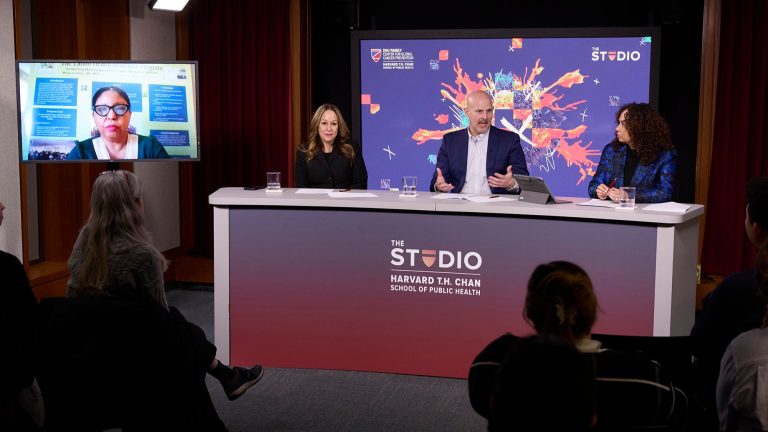Navigating the Labyrinth of Cancer Misinformation: Experts Offer Guidance in a World of Digital Deception
The digital age has ushered in an era of unprecedented access to information, but this accessibility has a dark side: the proliferation of misinformation. This is particularly concerning in the realm of healthcare, where inaccurate information can have life-altering consequences. The issue of cancer misinformation took center stage at a recent Harvard T.H. Chan School of Public Health Studio event, where experts discussed the pervasiveness of false claims online, their potential impact on patients, and strategies for navigating this treacherous information landscape. The event, held in conjunction with the Zhu Family Center for Global Cancer Prevention during World Cancer Week, featured insights from leading researchers and healthcare professionals.
A key takeaway from the discussion was the vulnerability of cancer patients to misinformation. The emotional turmoil and desperation that often accompany a cancer diagnosis can make individuals susceptible to unsubstantiated claims promising quick fixes or miracle cures. Skyler Johnson, assistant professor at Huntsman Cancer Institute and the University of Utah School of Medicine, emphasized the human desire for certainty, particularly in the face of a life-threatening illness. This desire, he argued, makes patients easy targets for misinformation peddlers who offer false hope disguised as scientific certainty. Following such misguided advice, he warned, can jeopardize a patient’s chances of recovery. Stacy Loeb, professor of urology and population health at New York University, added that misinformation permeates every stage of the cancer journey, from prevention to survivorship, fueling unnecessary anxiety and potentially deterring patients from seeking evidence-based care.
The pervasiveness of cancer misinformation online was underscored by Loeb’s research. Her team’s analysis of social media content related to prostate and bladder cancer revealed a troubling prevalence of misinformation, particularly on platforms like YouTube, Instagram, and TikTok, where 40% of posts contained inaccurate information. Even when information is accurate, it’s often presented in a way that is inaccessible to the average person, lacking clear guidance or presented at a reading level too high for most patients to comprehend. This information gap is further exacerbated by the scarcity of content tailored to non-English speakers and diverse populations. Furthermore, Johnson pointed out that engaging content, often employing sensationalized claims, tends to outperform factual information in terms of online visibility. This creates a scenario where misinformation, packaged in more appealing formats, outcompetes evidence-based information in the battle for public attention.
The consequences of this misinformation can be dire. Patients, swayed by false promises, may forgo conventional treatments in favor of unproven or disproven alternative therapies, including restrictive diets and unverified supplements. Johnson highlighted the stark difference in survival rates between patients who opt for alternative treatments and those who undergo evidence-based care. His research demonstrated significantly lower five-year survival rates among those who chose alternative approaches for curable cancers. While complementary therapies like mindfulness and massage can be beneficial for coping with the emotional and physical toll of cancer, certain dietary advice, such as drastically reducing sugar intake or losing excessive weight, can interfere with chemotherapy and other essential treatments.
Addressing the challenge of misinformation requires a multi-pronged approach. While healthcare providers are the most reliable sources of information, time constraints during appointments often limit their ability to address all patient concerns fully. Recognizing that patients will inevitably seek information elsewhere, experts advocate for empowering patients to critically evaluate online sources. Loeb suggested providing patients with an “information prescription,” directing them to credible websites such as university and government resources. Johnson proposed a simple evaluation tool, the CRAP Score, which encourages patients to scrutinize online content based on criteria such as exaggerated claims, requests for money, anecdotal evidence, and unknown publishers.
Beyond individual efforts, building trust between patients and healthcare providers is crucial. Milagros Abreu, president and CEO of The Latino Health Insurance Program, Inc., emphasized the importance of understanding patients’ values and how they influence their healthcare decisions. Open communication and culturally sensitive approaches are essential for fostering trust and ensuring that patients feel comfortable discussing their concerns and seeking guidance from their healthcare team. The Zhu Center’s World Cancer Day activities, including informal Q&A sessions, cooking demonstrations featuring healthy recipes, and the symbolic lighting of landmarks, reflect a broader community engagement strategy to promote cancer awareness and disseminate accurate information. These initiatives, coupled with efforts to make evidence-based information more accessible and engaging, represent crucial steps in combating the spread of cancer misinformation and empowering patients to make informed decisions about their health.


